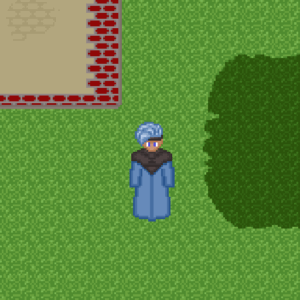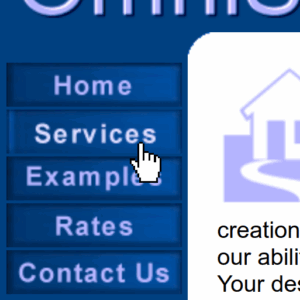I’m incredibly excited to serve the GNOME Foundation as its new full-time Executive Director.
As Richard mentioned, I am receiving the baton from him, after his tenure as the GNOME Foundation’s interim Executive Director. Richard helped guide the Foundation through some rough terrain and, after all that, I’m especially grateful that Richard has been so generous with his time. All the best, Richard. Thank you for everything you do! It always feels good to make a new friend like Richard and I don’t think he’ll be a stranger to the GNOME community, even once he’s neck-deep in his PhD thesis.
It is precisely that community — that global network of friends — that has me so excited to work with the GNOME Foundation. The word “excited” really doesn’t do it justice. I have been involved in many free software, open design, and open docs efforts over the years. But none of those have the gargantuan history, community, and installed base of GNOME. It is a privilege to serve GNOME, and I’m grateful. That gratitude is the entire reason I’m here and I’d like to take the rest of this post to explain where that feeling comes from — and what I hope to do with it.
## My story
Since I am new to the GNOME community, I’ll start by sharing some background on myself.
I grew up in a village of 1000 people in western Canada and, within that village, I was unquestionably “that computer nerd kid.” I built a graphical MUD before the term “MMORPG” was coined. The code was awful. I started my first web development company when I was 15 years old. It was very 1996.


I started a couple more businesses in University, around the time I started using Linux and GNOME: MonoHost, which provided ASP.net webhosting on Linux, and a small software consultancy. Neither of those stuck.
After University, my professional software career can be broken down into two 10-year chunks: pre-crash and post-crash.
The first ten years is a blur. I joined ThoughtWorks when they had fewer than 500 employees, got involved in the early agile (lower-case “a”) software movements, used Rails before 1.0, wrote C#, Ruby, Java, JavaScript, and Clojure, joined DRW, built large distributed systems, led teams, got bored, moved to India, and started Nilenso Software with seven friends. Nilenso Software is India’s first employee-owned technology cooperative and it still exists today.
Two years into Nilenso, I had a bicycle crash and three botched eye surgeries while visiting a client in California. I was left partly blind. I have a crushed optic nerve, vitrectomy, and scleral buckle. (I suggest… not looking up example videos.)
After the bicycle crash, I found it difficult to code — or even use a computer at all, at certain contrasts. White backgrounds, for example, still cause me instant headaches. And so I began a decade of recruiting, sales, management, startups, fundraising, and product consulting. After leaving Nilenso, I volunteered with nonprofits and worked on two open source database products: XTDB and Endatabas. After closing down Endatabas, I began interviewing with the GNOME Foundation, which brings me here.
I moved back to Canada during Covid and I now live in Halifax, on the east coast. (One timezone east of New York, Europeans will be happy to note!) I still ride bicycles. I run in the park, swim in the ocean, canoe to islands, and climb rocks. I play board games. I write a little code on weekends. I meditate Vipassana. I have an off-grid cabin by the ocean that requires constant repairs. I drive an old truck. Due to an inside joke that went too far, I only wear black suits with white shirts. On any given day, I can smoothly transition between business meetings, weddings, and funerals. As one does.
Over the past three decades, I have been inspired by many open source projects but the aspect of GNOME that inspires me the most is the clarity of its mission. There is never any disagreement about the mission: GNOME is a universal computing environment. It is for everyone, everywhere.
I’m in awe of this.
If you’ve ever been involved in the creation of a software product, you’ll appreciate just how exceptional it is for one product (especially one so large) to retain a single mission like this for a quarter century. That kind of continuity doesn’t just magically happen. Let’s talk about that for a second.
## Gratitude
Over the past few days, with each conversation I’ve had with folks in the community, I found myself increasingly grateful for the decades of work put into GNOME. A person forgets just how much time, energy, leadership, and passion has gone into a project of this size.
I’ve been using GNOME since 2002. By the late 2000s, it was becoming very easy to take GNOME for granted. By GNOME 3, it’s safe to say I did take GNOME for granted. This is a good thing, in a way. We take the water utility or electricity in our homes for granted precisely because they work so perfectly and invisibly that their origins can be forgotten.
But GNOME isn’t financed by billions of tax dollars. It’s easy to forget that, too. My friends and colleagues over the years have compared GNOME to MacOS and Windows, apples-to-apples, as if GNOME were also built by a 3-trillion-dollar corporation. If your open source project is compared favourably to competitors with a $6T aggregate market cap, you’re doing something right.
This continuity is magical, but it’s magic created by the many contributors who make GNOME happen, release to release, year after year.
I don’t want to feel this gratitude alone. As part of our work at the Foundation, I hope we can bring this feeling to many of GNOME’s users.
## Transparency
Bringing that feeling to users means showing them the people and processes behind GNOME. None of us can understand infrastructure like GNOME without a window into it. So many of the systems we rely on every day are hidden from us. I have always loved this Hans Rosling comment:
Sometimes, when I turn the water on to wash my face in the morning and warm water comes out just like magic, I silently praise those who made it possible: the plumbers. When I’m in that mode I’m often overwhelmed by the number of opportunities I have to feel grateful to civil servants, nurses, teachers, lawyers, police officers, firefighters, electricians, accountants, and receptionists. These are the people building societies. These are the invisible people working in a web of related services that make up society’s institutions. These are the people we should celebrate when things are going well.
The contributors, maintainers, board members, and Foundation staff are these plumbers. Even in my short few days with the Foundation, I’ve seen everyone working hard behind the scenes to keep the lights on and ensure GNOME 49 will be a success, even if it feels like GNOME 48 was just released moments ago.
I want millions of GNOME users to see what I’ve had the privilege to see: the life and energy of the folks who keep GNOME running for us.
We should celebrate. We have every reason to.
## Intentions
Of course, transparency isn’t a switch we can just turn on. It’s a constant effort we apply to our own processes. It’s iterative. It’s work. But it can also be fun! Knowing that everyone else is trying their hardest can be the most energizing motivation, and I’m excited to help.
Beyond transparency, I hope we can re-establish the GNOME Foundation’s … well, foundations. The Foundation exists to support GNOME, to support design and development, to support contributors.
A big part of this is financial stability. Ultimately, the Foundation should support new growth. But to begin with, we need bedrock.
One word to describe these intentions is resilience: across finances, people, documentation, and processes. Let’s build an environment that lasts another 27 years.
Leave a Reply